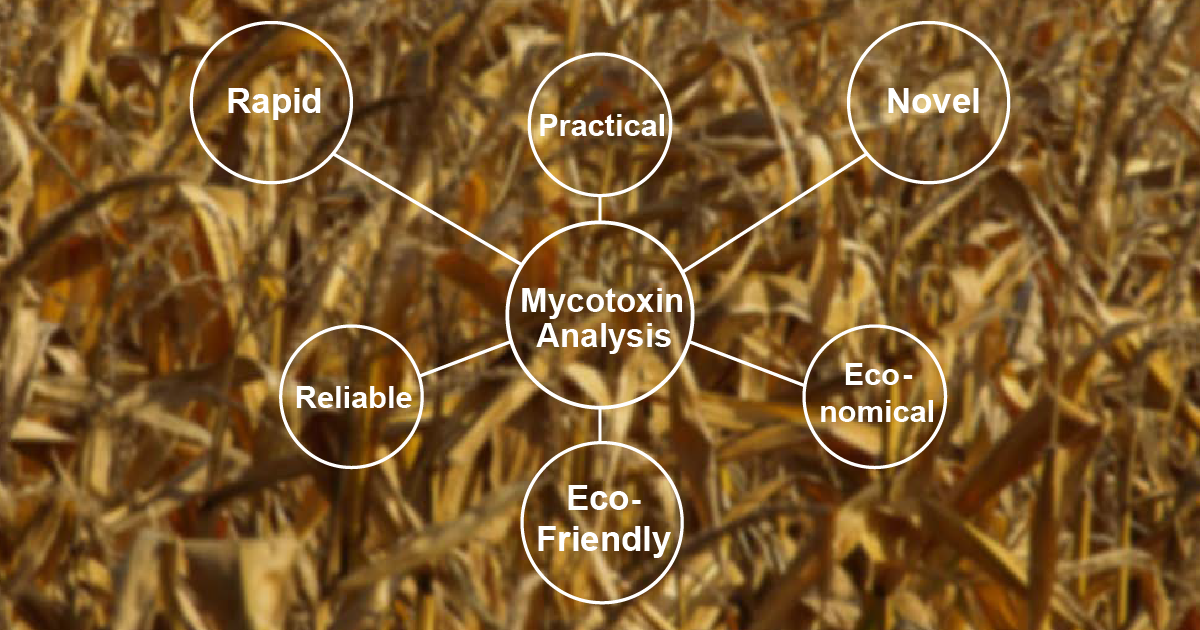Advances towards Novel Rapid and Eco-Friendly Methods for the Analysis of Mycotoxins in Food
A special issue of Toxins (ISSN 2072-6651). This special issue belongs to the section "Mycotoxins".
Deadline for manuscript submissions: closed (30 June 2022) | Viewed by 7124

Special Issue Editors
Interests: organic contaminants in the food chain with focus on mycotoxins; investigation of transformation products of contaminants of emerging concern; development of analytical methods for screening and standardization; certification of reference materials for food and consumer products
Special Issues, Collections and Topics in MDPI journals
Interests: novel and on-site analytical methods; organic trace and food analysis; volatile organic compounds as marker analytes; non-target chromatography and mass spectrometry
Special Issue Information
Dear Colleagues,
Mycotoxins, a diverse group of fungal toxins, pose a serious threat to human and animal health and cause major economic impacts worldwide. These secondary metabolites can occur throughout the food chain, including production, processing, transport and storage. Increased temperatures and humidity due to climate change may exacerbate the problem. As a result of toxicological studies in recent years, more and more national and international regulations are being issued to set maximum levels for certain mycotoxins.
For wide acceptance and implementation of these regulations, reliable, economical and practical detection methods are essential. Although several analytical methods for mycotoxins are already known, future challenges can be identified. One of these challenges are rapid methods, preferably at the site of contamination, to reduce further processing efforts. Another trend are ecologically friendly methods, e.g. by miniaturization or by avoiding harmful substances. To contribute to these processes, this special issue will focus on advances in novel rapid and environmentally friendly methods for the analysis of mycotoxins in food.
Dr. Matthias Koch
Dr. Ruben Epping
Guest Editors
Manuscript Submission Information
Manuscripts should be submitted online at www.mdpi.com by registering and logging in to this website. Once you are registered, click here to go to the submission form. Manuscripts can be submitted until the deadline. All submissions that pass pre-check are peer-reviewed. Accepted papers will be published continuously in the journal (as soon as accepted) and will be listed together on the special issue website. Research articles, review articles as well as short communications are invited. For planned papers, a title and short abstract (about 100 words) can be sent to the Editorial Office for announcement on this website.
Submitted manuscripts should not have been published previously, nor be under consideration for publication elsewhere (except conference proceedings papers). All manuscripts are thoroughly refereed through a double-blind peer-review process. A guide for authors and other relevant information for submission of manuscripts is available on the Instructions for Authors page. Toxins is an international peer-reviewed open access monthly journal published by MDPI.
Please visit the Instructions for Authors page before submitting a manuscript. The Article Processing Charge (APC) for publication in this open access journal is 2700 CHF (Swiss Francs). Submitted papers should be well formatted and use good English. Authors may use MDPI's English editing service prior to publication or during author revisions.
Keywords
- Mycotoxins
- Food safety
- Analytical methods
- Novel
- Rapid
- Eco-friendly
Benefits of Publishing in a Special Issue
- Ease of navigation: Grouping papers by topic helps scholars navigate broad scope journals more efficiently.
- Greater discoverability: Special Issues support the reach and impact of scientific research. Articles in Special Issues are more discoverable and cited more frequently.
- Expansion of research network: Special Issues facilitate connections among authors, fostering scientific collaborations.
- External promotion: Articles in Special Issues are often promoted through the journal's social media, increasing their visibility.
- Reprint: MDPI Books provides the opportunity to republish successful Special Issues in book format, both online and in print.
Further information on MDPI's Special Issue policies can be found here.







